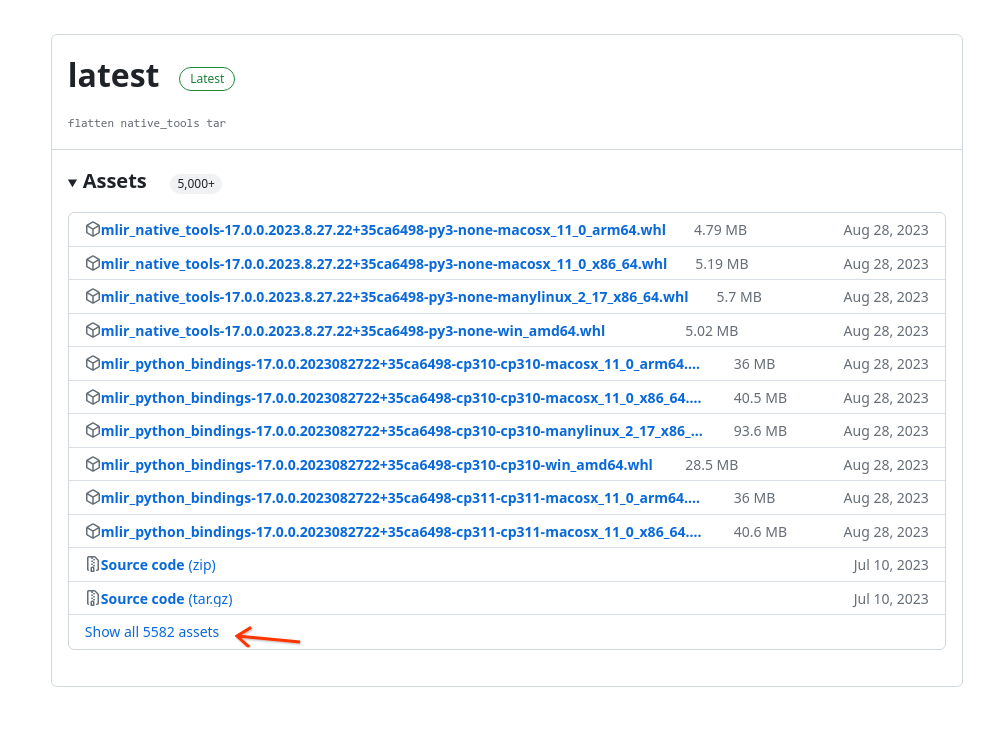I did not discover or invent this trick .
I wanted to make available a Python wheel to some developers but I did not want to publish it on PyPI for a variety of reasons.
- I am not the original author of the code and I did not want to take credit for it.
- I wanted to include the git commit hash in the version number which PyPI does not allow.
The trick is pretty simple but leverages two simple facts:
-
For a URL to behave similar to PyPI for
pipto install a package, it merely must provide anindex.htmlfile with links to the wheels. This is the premise of PEP 503 which defines the PyPI Simple Repository API.<!DOCTYPE html> <html> <body> <a href="/frob/">frob</a> <a href="/spamspamspam/">spamspamspam</a> </body> </html> -
GitHub Release Page has a view that includes all the links to all assets in the release. For instance for let’s consider the mlir-wheels repository that uses this trick. It has a single release with over 5,000 “assets”, where each asset is a wheel for a different version and particular platform.

pip itself cannot use this page unfortunately, because the hyperlinks are loaded via Javascript.
There is however an alternative page that is a basic HTML view of all the assets.
https://github.com/makslevental/mlir-wheels/releases/tag/latest -> https://github.com/makslevental/mlir-wheels/releases/expanded_assets/latest

With this page you can easily use pip to install and upgrade the packages.
pip install mlir-python-bindings \
-f https://github.com/makslevental/mlir-wheels/releases/expanded_assets/latest
Happy hosting. 🎉